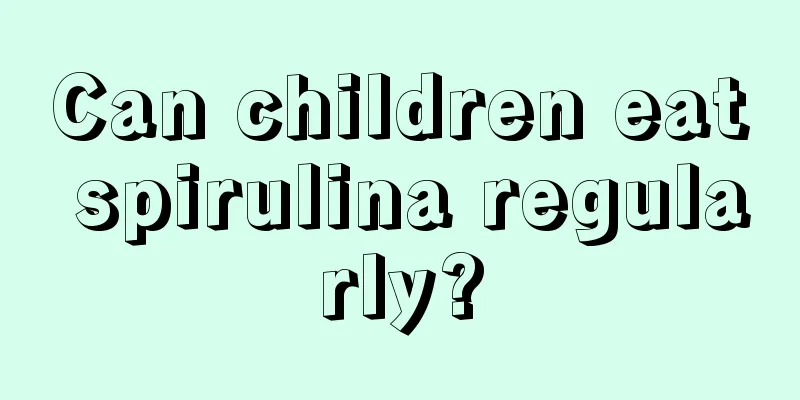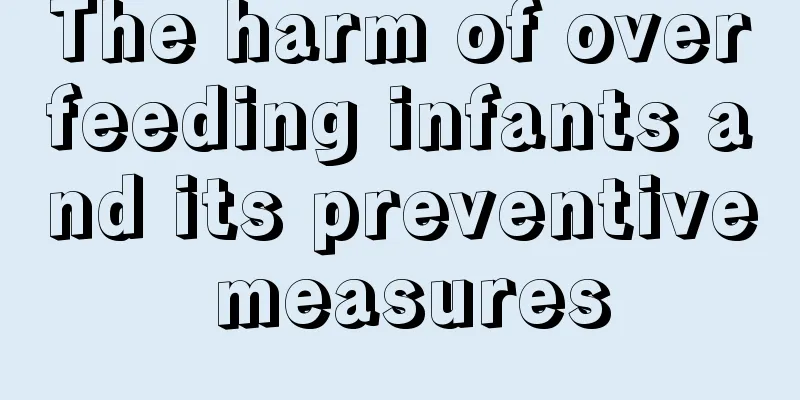Do babies with jaundice love to sleep?

|
Jaundice is a normal physiological phenomenon in newborns and generally does not cause any problems for the body. However, we should also pay attention to the pathological phenomenon of jaundice that persists. But do babies with jaundice like to sleep? Newborns sleep for a long time, so it is not because of jaundice that they sleep more. Generally, 16 to 20 hours of sleep is normal. If the jaundice does not subside, parents should take the baby for examination in time. If your child has jaundice, it should be neonatal jaundice. Neonatal jaundice refers to abnormal bilirubin metabolism in the neonatal period, which causes increased bilirubin levels in the blood and yellowing of the body. It usually disappears in about 10 days. Children of this age spend most of their time sleeping, and 20 hours a day is not too much. It is normal as long as there are no other problems such as fever and diarrhea. Clinical manifestations 1. Physiological jaundice In mild cases, the disease is light yellow and limited to the face and neck, or spread to the trunk. The sclera may also turn yellow and then disappear after 2 to 3 days, and the skin color returns to normal on the 5th to 6th day. In severe cases, jaundice may spread to the head and then the feet, and the vomitus and cerebrospinal fluid may also turn yellow for more than a week. In particular, some premature infants may persist for up to 4 weeks. Their stool is still yellow and there is no bilirubin in the urine. (1) In mild cases, jaundice is light pink in color, while in severe cases, the color is darker, but the skin is rosy yellow with a hint of red. (2) Jaundice is mostly found on the trunk, sclera and proximal limbs, usually not exceeding the elbows and knees. (3) The newborn is generally in good condition, has no anemia, no hepatosplenomegaly, normal liver function, and no kernicterus. (4) Physiological jaundice is more common in premature infants than in full-term infants and may appear slightly later, 1 to 2 days later. The more severe the jaundice, the slower it disappears, which may last up to 2 to 4 weeks. 2. Pathological jaundice Often have the following characteristics: ① Early onset, within 24 hours after birth; ② Severe degree: more than 12.9mg/dl in full-term infants and more than 15mg/dl in premature infants; ③ Rapid progression, with serum bilirubin rising by more than 5 mg/dl per day; ④ Lasts for a long time, or recurs. (1) Jaundice may affect not only the face and trunk, but also the limbs, hands, and soles of the feet. (2) The color of jaundice is mainly orange or golden yellow due to increased unconjugated bilirubin; it is mainly dark green or yellow due to increased conjugated bilirubin. (3) Accompanying symptoms: Hemolytic jaundice is often accompanied by anemia, hepatosplenomegaly, petechiae, edema, and heart failure. Infectious jaundice is often accompanied by fever, symptoms and signs of infection and poisoning. Obstructive jaundice is often accompanied by liver enlargement, white stools and yellow urine. (4) Systemic symptoms may occur in severe jaundice, with symptoms such as poor response, mental depression, and anorexia. Low muscle tone, followed by irritability, screaming, difficulty breathing, convulsions or opisthotonos, increased muscle tone, etc. |
<<: Why does my child have a cold and is sleepy?
>>: What causes pain in the back of the foot in children?
Recommend
What are the dietary treatments for children with lung heat and cough?
If children have lung heat and cough, they can be...
Child with protruding ears
Protruding ears are a type of ear shape that ever...
Methods for regulating the spleen and stomach in children
Regulating the spleen and stomach is not just a m...
What foods are good for babies to eat during breastfeeding?
We all know that during the breastfeeding period,...
Symptoms of lactose intolerance in babies
The phenomenon of lactose intolerance has always ...
What kind of fish is good for children?
Children usually like to eat fish, but we all kno...
What should children eat when they have tracheitis and cough?
Coughing is a more obvious symptom in children su...
The baby will turn sideways during the confinement period
Newborn babies are curious about the world. They ...
Newborn baby diarrhea with milk curds
Since the digestive organs of newborns are not fu...
Baby's mouth smells sour
After birth, babies cannot eat other foods and ca...
What should I do if my child has a persistent cough and phlegm?
What should I do if my child has a persistent cou...
What if the child's face turns yellow?
I believe that most parents are very concerned ab...
What should I do if my baby has a runny nose?
It is a common phenomenon for babies to have a ru...
Why are the soles of children's feet and palms hot?
Children often have many minor physical ailments ...
What are the first aid methods for children with fever and convulsions?
Fever itself is a common disease in life. As long...









